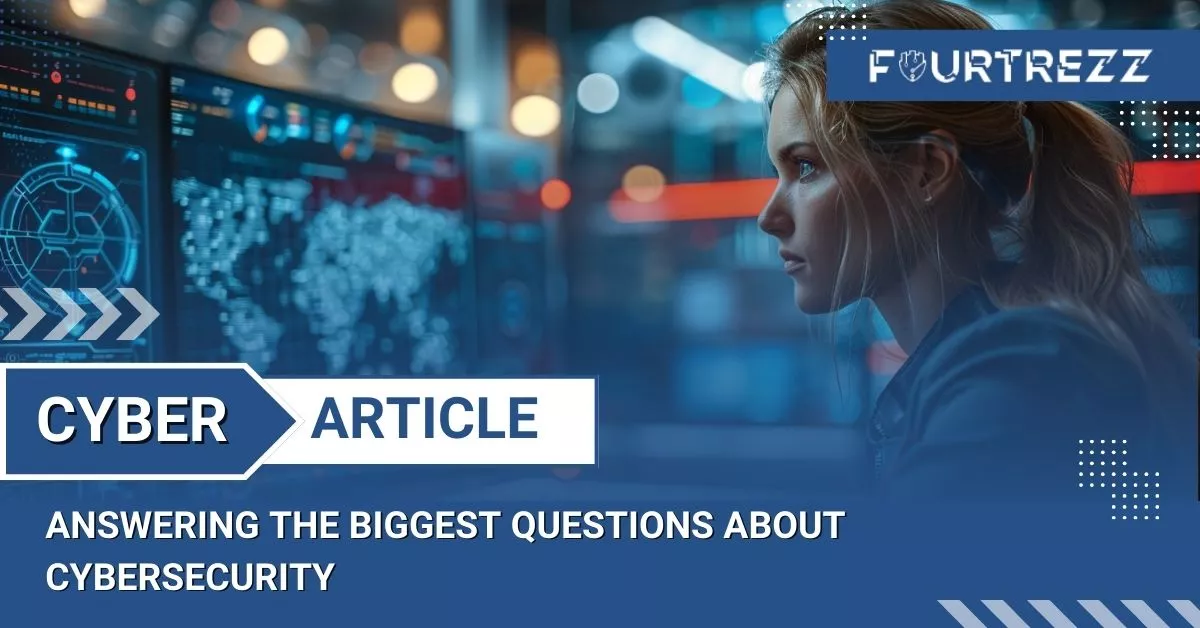Senin, 1 April 2024 | 4 min read | Andhika R
Answering the Biggest Questions About Cybersecurity
Cybersecurity is an increasingly relevant and urgent topic in today's digital era. Cyber threats are on the rise and can cause significant damage to businesses if not properly managed. However, many companies still do not fully understand the importance of cybersecurity or how to effectively manage it. Therefore, in this article, we will answer some of the biggest questions about cybersecurity often asked by IT experts and provide practical guidance on how to effectively manage a company's cybersecurity.

What is cybersecurity and why is it important for businesses?
Cybersecurity refers to the practices and technologies used to protect computer systems, networks, and data from cyber attacks. The goal of cybersecurity is to prevent, identify, and respond to security threats targeting IT systems and data.
Cybersecurity is crucial for businesses because maintaining the security of IT systems and data can help protect the company from financial losses, reputation damage, and loss of customer trust. Businesses affected by cyber attacks can suffer significant financial losses and even threaten the company's survival.
How to evaluate a company's cybersecurity level?
Evaluating a company's cybersecurity level is an important step in ensuring that IT systems and data are well protected. Steps that can be taken to evaluate a company's cybersecurity level include:
- Conducting regular cybersecurity audits to evaluate system weaknesses and determine necessary actions.
- Implementing good cybersecurity practices, such as using strong passwords, regularly updating software, and limiting access to sensitive data.
- Measuring cybersecurity performance by collecting data on security incidents, including the number of cyber attacks and the time taken to respond to these attacks.
- Building an internal cybersecurity team or collaborating with cybersecurity service providers to monitor and protect IT systems and sensitive data.
What are the most common cybersecurity threats and how can they be addressed?
Some of the most common cybersecurity threats include:
- Malware: programs designed to damage or take control of systems. To address malware, companies can use antivirus software and firewalls.
- Phishing attacks: attempts to obtain confidential information by sending fake emails that appear to come from a trusted source. To address phishing attacks, companies can conduct regular cybersecurity training for employees and use email filters to identify phishing emails.
- DDoS attacks: attacks aimed at making services unavailable by flooding the network with fake internet traffic. To address DDoS attacks, companies can use network security solutions like firewalls and implement strict bandwidth usage policies.
- Hacking attacks: attempts to gain unauthorized access to systems by hacking user accounts or exploiting system vulnerabilities. To address hacking attacks, companies should regularly update systems and software, implement strict security policies, and closely monitor user activities.
How to integrate cybersecurity into a company's IT architecture?
Integrating cybersecurity into a company's IT architecture requires a holistic and strategic approach. Ways to integrate cybersecurity into the company's IT architecture include:
- Considering cybersecurity from the start in the development of systems and applications, by integrating cybersecurity technologies into the system architecture.
- Regularly updating software and systems to address newly discovered security vulnerabilities.
- Implementing the use of strong passwords, data encryption, and securing access to systems and sensitive data.
- Ensuring that all employees and vendors working with the company's IT systems follow good cybersecurity practices.
- Conducting regular cybersecurity audits to find system weaknesses and determine necessary actions.
How to protect the company from phishing and spear-phishing attacks?
Phishing and spear-phishing attacks are serious cybersecurity threats that can result in significant losses for companies. Ways to protect the company from phishing and spear-phishing attacks include:
- Conducting regular cybersecurity training for employees on how to identify phishing emails and how to respond to them.
- Using email filtering software to identify phishing emails and block them before they reach employee inboxes.
- Implementing strict email usage policies to minimize the risk of phishing and spear-phishing attacks.
- Ensuring that systems and software are up-to-date with the latest security patches.
- Conducting regular cybersecurity tests to find weaknesses and determine necessary actions.
Conclusion
Cybersecurity is an essential part of modern business that heavily relies on technology. In this article, we have discussed five common questions about cybersecurity and provided guidance on how to manage a company's cybersecurity. By following good cybersecurity practices, building a strong cybersecurity team, and integrating cybersecurity into the company's IT architecture, businesses can minimize the risk of cyber attacks and protect sensitive systems and data from financial and reputational loss.
Andhika RDigital Marketing at Fourtrezz
Artikel Terpopuler
Tags: Crypto-Agility, Keamanan Enterprise, Kriptografi Kuantum, Migrasi Kunci, NIST PQC
Baca SelengkapnyaBerita Teratas
Berlangganan Newsletter FOURTREZZ
Jadilah yang pertama tahu mengenai artikel baru, produk, event, dan promosi.



